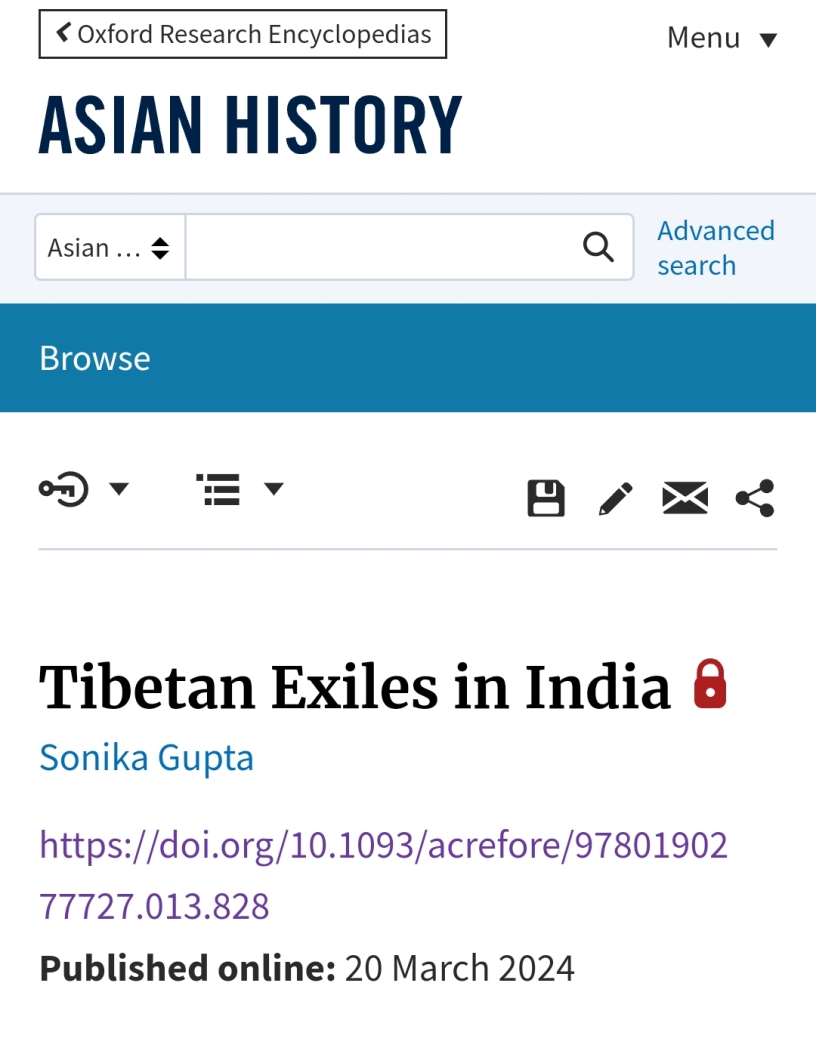This encyclopaedia entry was published in Oxford Research Encyclopedia of Asian History and can be accessed here: https://doi.org/10.1093/acrefore/9780190277727.013.828
Citation: Gupta, S. (2024). Tibetan Exiles in India. Oxford Research Encyclopedia of Asian History. https://oxfordre.com/asianhistory/view/10.1093/acrefore/9780190277727.001.0001/acrefore-9780190277727-e-828.
Abstract
Since 1959, after the flight of the Dalai Lama from Tibet, thousands of Tibetans have lived in protracted exile in India. India hosts the largest number of Tibetan exiles in the world and is also the seat of the Central Tibetan Administration (formerly known as the Tibetan Government in Exile) and the Tibetan Parliament in Exile. The Indian government has made a long-term commitment to Tibetan rehabilitation by setting up tens of designated Tibetan settlements in different parts of the country. These settlements are grouped into agricultural, handcraft-based, and cluster communities. While there has been definite economic and educational progress for the exile community in India, Tibetans continue to be stateless. Since 2000, there has been increased migration from Tibetan settlements in India to North America, Europe, and Australia as people search for a more stable legal status and better life opportunities. The Tibetan settlements in India, with their network of monasteries, schools, and other cultural institutions, remain the primary site of the Tibetan struggle for the homeland that is focused on the return of the Dalai Lama to Tibet under conditions of genuine autonomy. Therefore, sustaining these settlements is becoming a critical issue for the Central Tibetan Administration. As the Tibetan struggle for its homeland reaches its seventh decade in exile, it is undergoing parallel processes of institutionalized democratization and political fragmentation along regional and other lines.
Keywords: Tibetan exile rehabilitation, democratization, Central Tibetan Administration, diaspora
